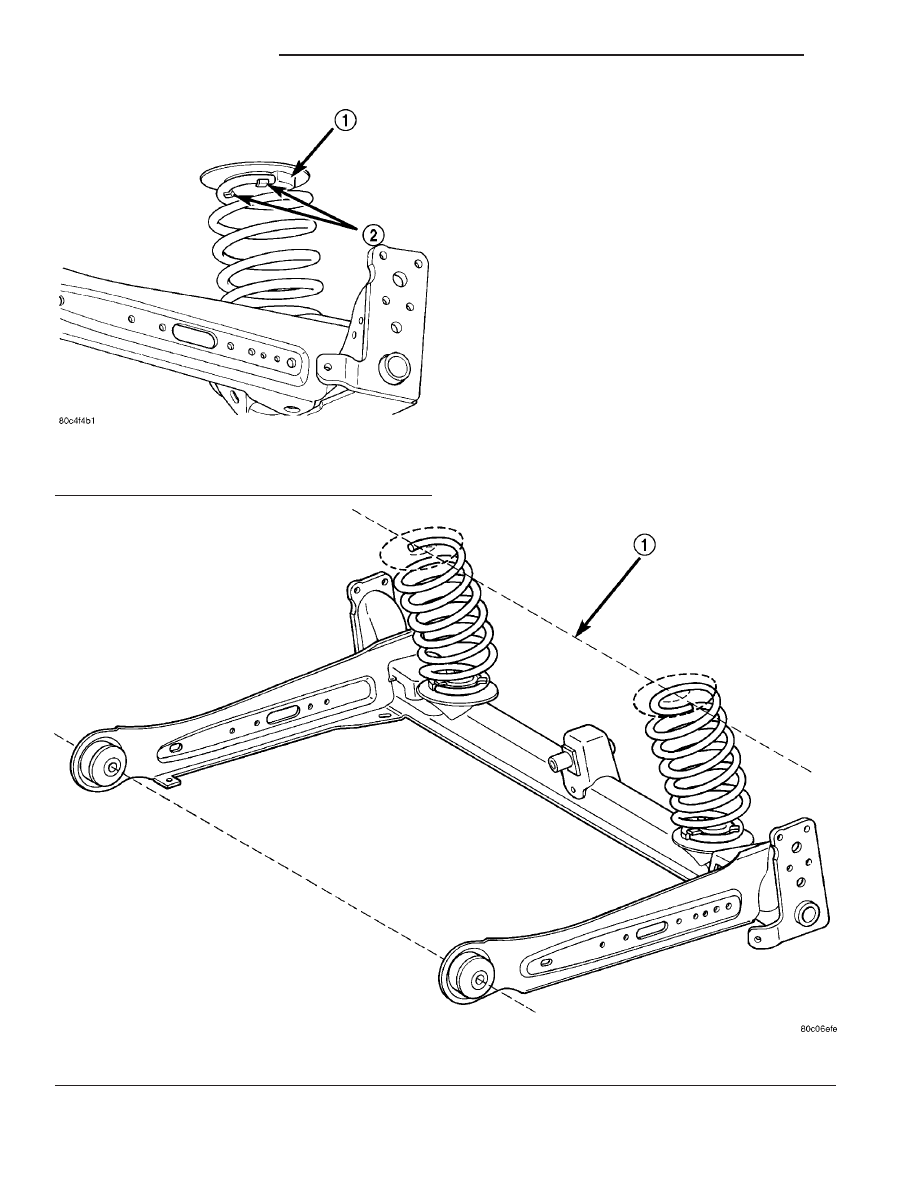Chrysler PT Cruiser. Manual - part 400

(8) Raise the transmission jack guiding the coil
springs into the spring mounting brackets on the
body of the vehicle. Raise the jack until the shock
absorber lower mounting bolts can be installed
though the axle brackets and shock absorber lower
mounting eyes (Fig. 15).
(9) Install the washer and nut on the end of each
shock absorber lower mounting bolt. Tighten the
mounting bolts to a torque of 88 N·m (65 ft. lbs.).
(10) Remove the jack.
(11) If equipped with a rear stabilizer bar, hook
the lower ends of the stabilizer bar cushion retainers
into the slots in the back of the axle, then rotate the
opposite end of the retainers upward so the mounting
bolts can be installed. Install the mounting bolt
though each cushion retainer into the threads in the
rear axle (Fig. 16). Tighten the rear stabilizer bar
cushion retainer bolts to a torque of 61 N·m (45 ft.
lbs.).
Fig. 18 Isolator Properly Installed
1 - ISOLATOR ABUTMENT
2 - FINGERS
Fig. 19 Coil Spring Orientation
1 - IMAGINARY LINE
2 - 36
REAR SUSPENSION
PT
AXLE - FRONT WHEEL DRIVE REAR (Continued)